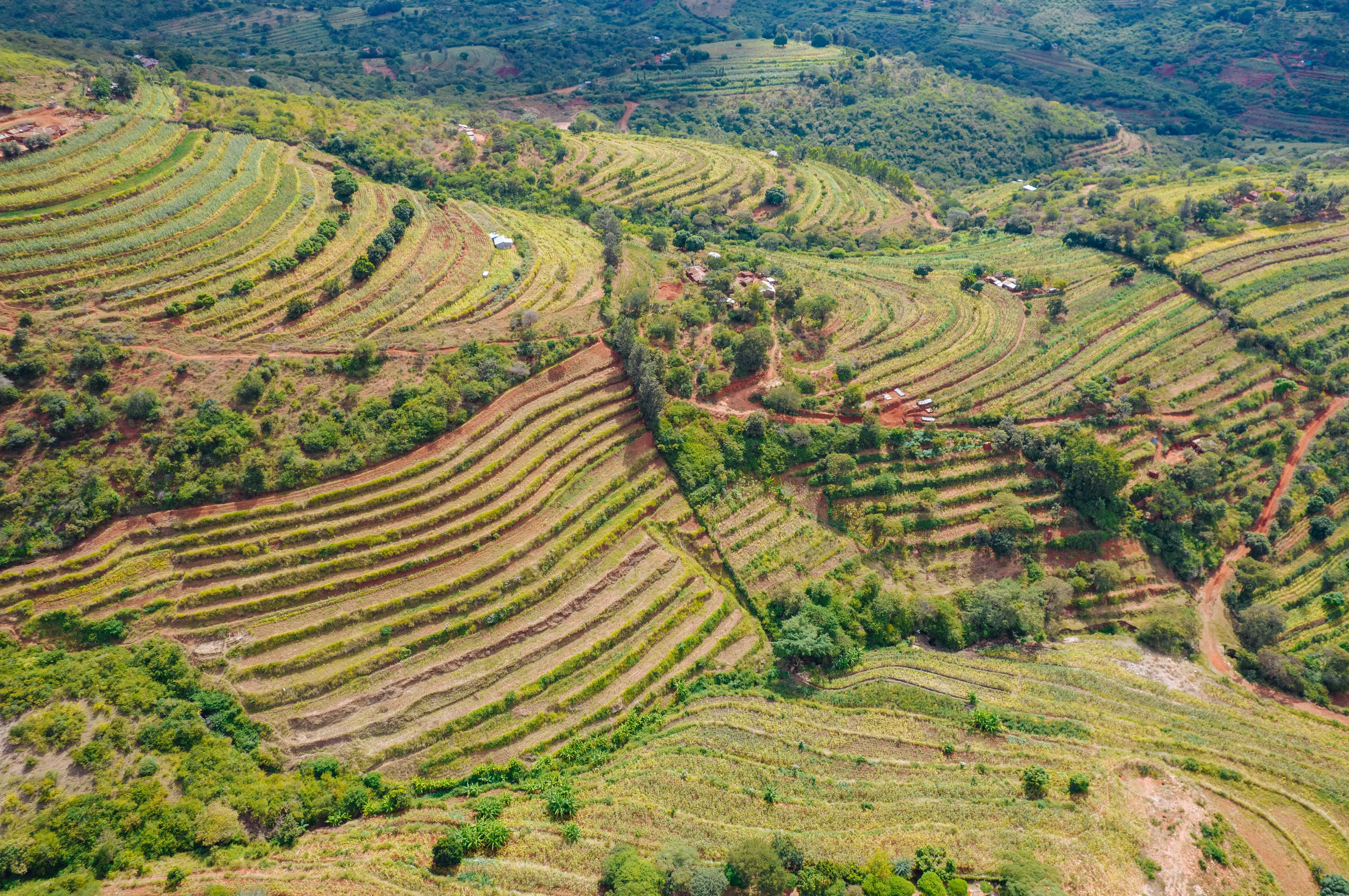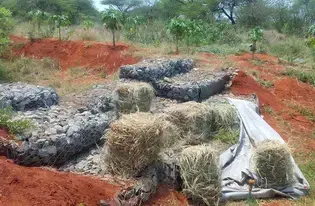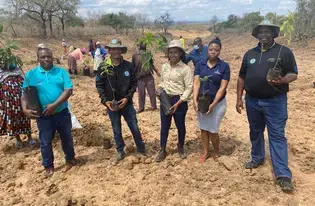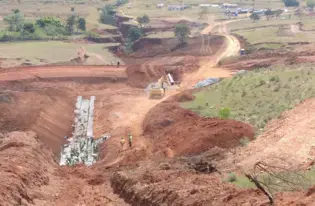The 75,000-hectare Makuli-Nzaui landscape – located in the Southwest of Kenya’s Makueni County – supplies water to four of lifegiving rivers, the Kaiti, Thwake, Kikuu and Mwilu. This small area, only 13% of the county, supplies the water of nearly half the local residents and underpins the economic vitality of its rural and urban communities.
Protecting this vital landscape and its rivers are the Makuli and Nzaui forests. Unfortunately, like with most forests globally, they too have experienced degradation and loss. More than 7% has disappeared since 1988. This has reduced biodiversity and reduced the availability of key ecosystem services like water and soil nutrients, caused widespread erosion, and, most importantly, harmed agricultural productivity. Because 78% of family incomes in the landscape derive from farming, the degradation of the ecosystem is jeopardizing thousands of livelihoods.
To address that challenge, the County Government of Makueni has rolled out an ambitious plan to revive productivity and the livelihoods of the rural communities by improving land management, access to water, and sustainable agricultural value chains that add value to key crops like the mango. The end goal? Put more money into farmers’ pockets.
World Resources Institute (WRI) is working closely with the county leadership and providing technical support to revamp rural productivity by restoring forests, farms, and other ecosystems. Since 2018, WRI has supported a series of scientific assessments, situation analyses and a road map towards a restored Makuli-Nzaui. As part of that process, they have carried out a county-wide assessment of restoration opportunities and a restoration diagnostic that identified how to accelerate action by engaging the right actors and overcoming barriers to restoration.
People in the landscape have already started restoring land. So far, communities and local organizations have worked together to build tree nurseries that have grown 1.5 million seedlings. Over the next months, they will be planted throughout the landscape.
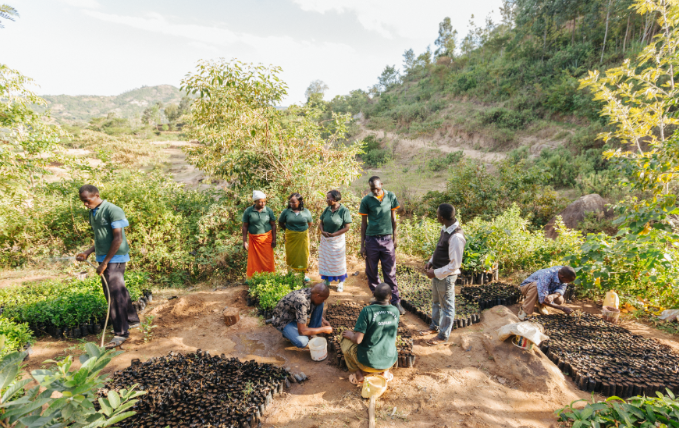
But they knew that in order to scale up their work, everyone living and working in the landscape had to have the same vision of success. That’s why the Government of Makueni County and WRI co-created an inclusive stakeholder coordination platform comprising of County Government departments, national government agencies like the Kenya Forest Service, Kenya Water Towers Agency, and Water Resource Authority, community representatives, and local NGOs. Together, they have developed a Landscape Restoration Action Plan that serves as the roadmap for coordinated action to restore the Makuli-Nzaui landscape.
The collaborative action plan identifies the goals, targets, and approaches for restoring forests, watersheds, farms and rangelands within the landscape, as well as the specific roles that each organization needs to play. The plan emphasizes the reintroduction of important indigenous and fruit tree species to degraded and deforested land to increase genetic diversity, promote soil and water conservation, increase the productivity of the landscape, and boost local incomes and biodiversity.
Because the platform provided a space for public participation, information sharing, awareness building, and local ownership, the collaborative planning and engagement process has increased the popularity of land restoration within the landscape’s many communities. The lessons from this small frontrunner landscape will inform the restoration of all of Makueni County in the coming years.
But they knew that in order to scale up their work, everyone living and working in the landscape had to have the same vision of success. That’s why the Government of Makueni County and WRI co-created an inclusive stakeholder coordination platform comprising of County Government departments, national government agencies like the Kenya Forest Service, Kenya Water Towers Agency, and Water Resource Authority, community representatives, and local NGOs. Together, they have developed a Landscape Restoration Action Plan that serves as the roadmap for coordinated action to restore the Makuli-Nzaui landscape.
The collaborative action plan identifies the goals, targets, and approaches for restoring forests, watersheds, farms and rangelands within the landscape, as well as the specific roles that each organization needs to play. The plan emphasizes the reintroduction of important indigenous and fruit tree species to degraded and deforested land to increase genetic diversity, promote soil and water conservation, increase the productivity of the landscape, and boost local incomes and biodiversity.
Because the platform provided a space for public participation, information sharing, awareness building, and local ownership, the collaborative planning and engagement process has increased the popularity of land restoration within the landscape’s many communities. The lessons from this small frontrunner landscape will inform the restoration of all of Makueni County in the coming years.
TOOLS IN ACTION
WRI and partners have collected information on restoration potential, opportunities, and approaches for implementation in the landscape. Social network analysis was undertaken to identify stakeholders and their roles in the landscape. The Collect Earth tool was used to set a baseline understanding of where trees are growing in the landscape and to then track progress over time. The team also worked with local communities to identify their needs, the problems they face, and how restoration can help then. This evidence, from both scientific sources and local knowledge, formed the basis of the county’s shared vision, goals, and strategic interventions outlined in the Restoration Action Plan.
Now Makuli-Nzaui needs more funding to turn that vision into a reality. To provide a blueprint for blending public and private finance for the landscape, WRI and partners have developed a Restoration and Conservation Investment Plan that lays out the landscape’s investment opportunities and the business cases that can restore land and create jobs.
The Priceless Planet Coalition, led by Mastercard, has already made a funding commitment in alignment with the goals of local communities. By growing 890,000 trees in collaboration with the Green Belt Movement, the County Government, Kenya Forest Service, and WRI, this investment will kickstart the real work of restoring the landscape – and enable the government and civil society to measure progress over time through the County’s robust monitoring framework.
The investment plan aims to attract more investment like Mastercard’s into Makueni County and provide a framework that the rest of Kenya’s counties can follow to help the country achieve its AFR100 national target of restoring 5.1 million hectares by 2030.
As more and more work begins and more and more people start benefitting from restoration, this spirit of collaboration will continue to serve as the engine propelling Makuli-Nzaui – and all of Kenya – on its road to restoration.
To learn more about this work, consult this two-pager.
***
This work is funded by the German Ministry for Economic Development and Cooperation (BMZ) and the Good Energies Foundation.
